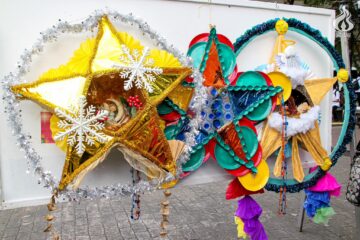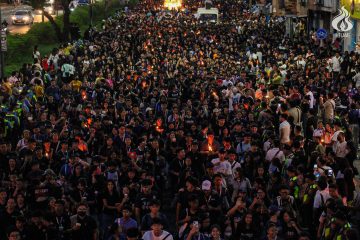THE PANDEMIC may have revealed that home is the safest place for many Filipinos but the world on the inside is not the same for people whose home is outside.
Traditional artist and storyteller Marius Cornelius Funtilar, otherwise called Marius Black, focused on Manila’s nooks and crannies. He adds depth to his artworks with the use of poetry. Perhaps it’s not indispensable that every artist should do the same, but his way of narration is both visionary and informative.
Marius, who graduated from the University of Santo Tomas in 2007, took up Fine Arts and majored in painting. He was conflicted between painting and comics but knew that he could execute both simultaneously.
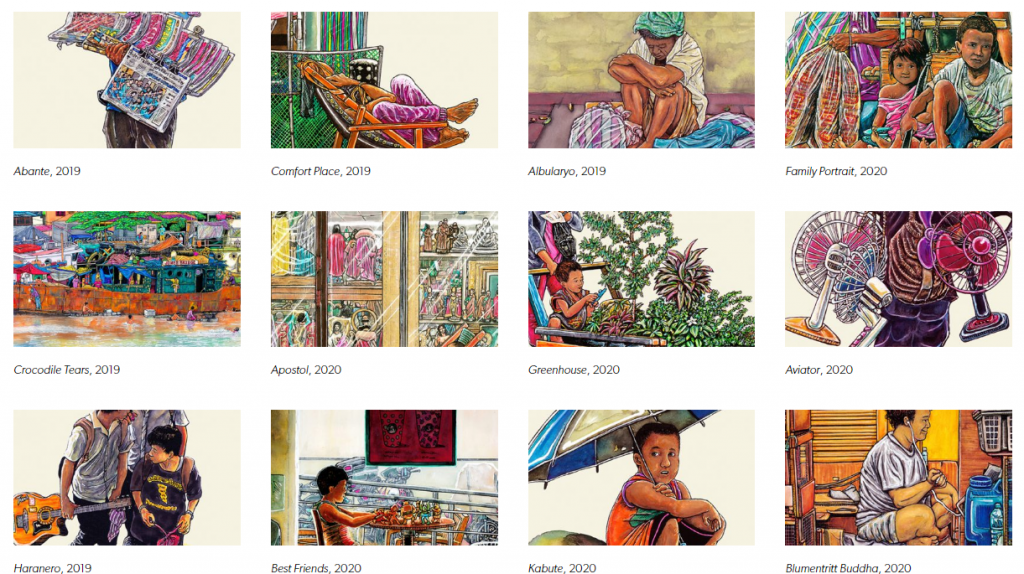
His fifth solo show Manila Synesthesia debuted on-site and virtually at Altro Mondo last July 31st to August 31st. It sheds light on synesthesia, a neurological condition where a phenomenon sparks the senses of the human mind and body.
Unlike the usual and balanced perception of things, synesthesia allows someone to experience various senses at the same time. The morning sky might look blue for most people, but for someone with synesthesia, it may look like it’s raining or even taste like oranges.
“In this show, I’m saying that people should notice things we normally ignore because they have hidden beauty in each of them,” Marius told The Flame.
The exhibit is part of his art series, which he called ‘Manila Ukiyo-e.’ It refers to the Japanese art style of woodblock printing and painting from the Edo period, which was the inspiration behind his artworks.
As a child, Marius had always enjoyed reading comic books and watching cartoons. By the time he’s convinced that it’s more than a hobby, he started creating his own stories through drawing comics.
Aside from self-publishing independent comics, he also creates art books, paintings, and poetry books together with his wife Guada, who’s also an artist.
The overlooked and forgotten features of Manila captured the attention of Marius. Inspired, the artist started taking pictures of subjects that show such features before painting them.
Dai dog
This art piece is about a particular dog that he saw in the streets after he watched the documentary of Japanese photographer Daido Moriyama. But unlike a stray who barks to a stranger, this one seemed frail and terrified.
It barely had fur, had a blind eye, and what appears to be a broken leg. It reflects the reality of how strays in the streets bear the brunt of their harsh environment.
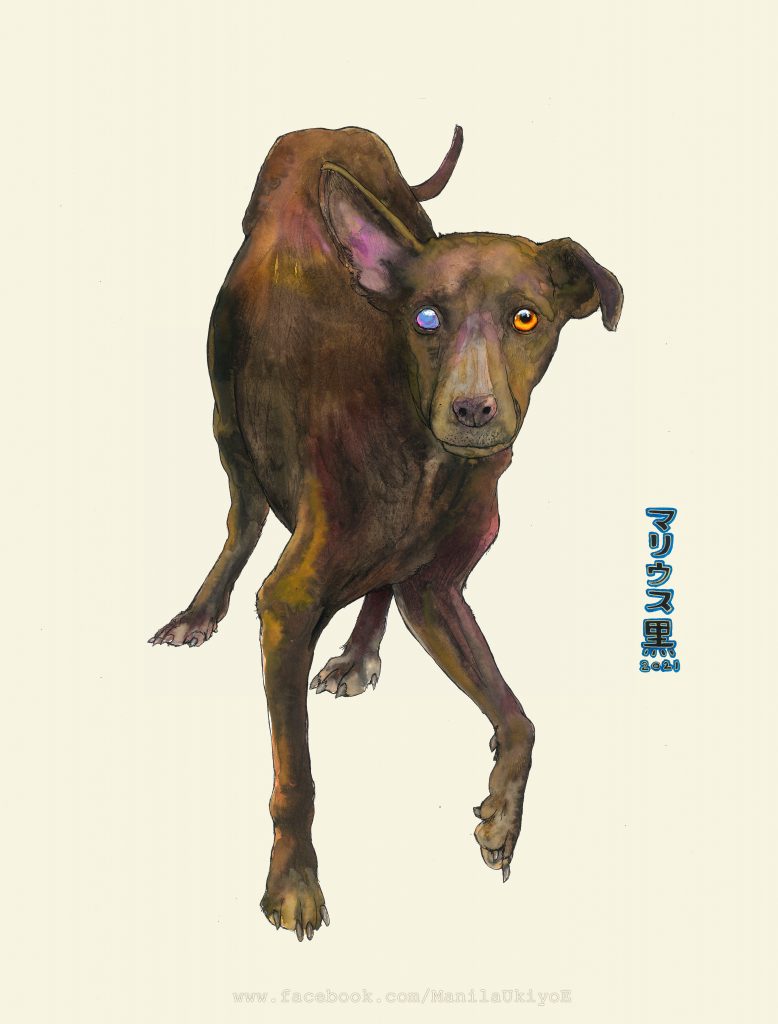

Lola Move
With the look of exhaustion on her face, ‘Lola Move’ resembles a white-haired elderly woman that Marius had seen driving a pedicab. The pedicab, in her case, is her makeshift home.
Seeing this encounter in person evokes a sense of sadness and pity, making viewers wonder how she manages to come by each day.

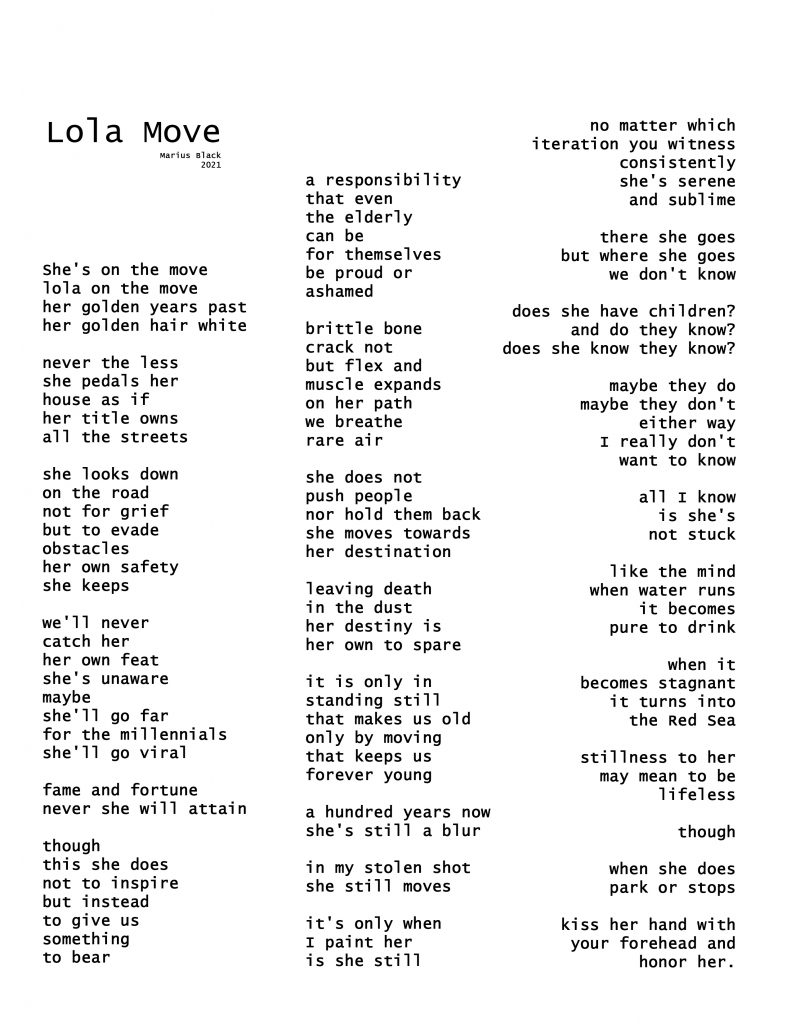
Xixa
‘Xixa’ shows a wandering homeless lady carrying things while walking barefoot. What makes this piece distinct is the woman’s posture and features, which hint that she has a mental disorder.
Viewers can easily recognize her character with someone from their community. The painting forces its viewers to take a step back and realize how society sometimes treats persons with such disorders unjustly, and makes them reflect on whether they have done the same.

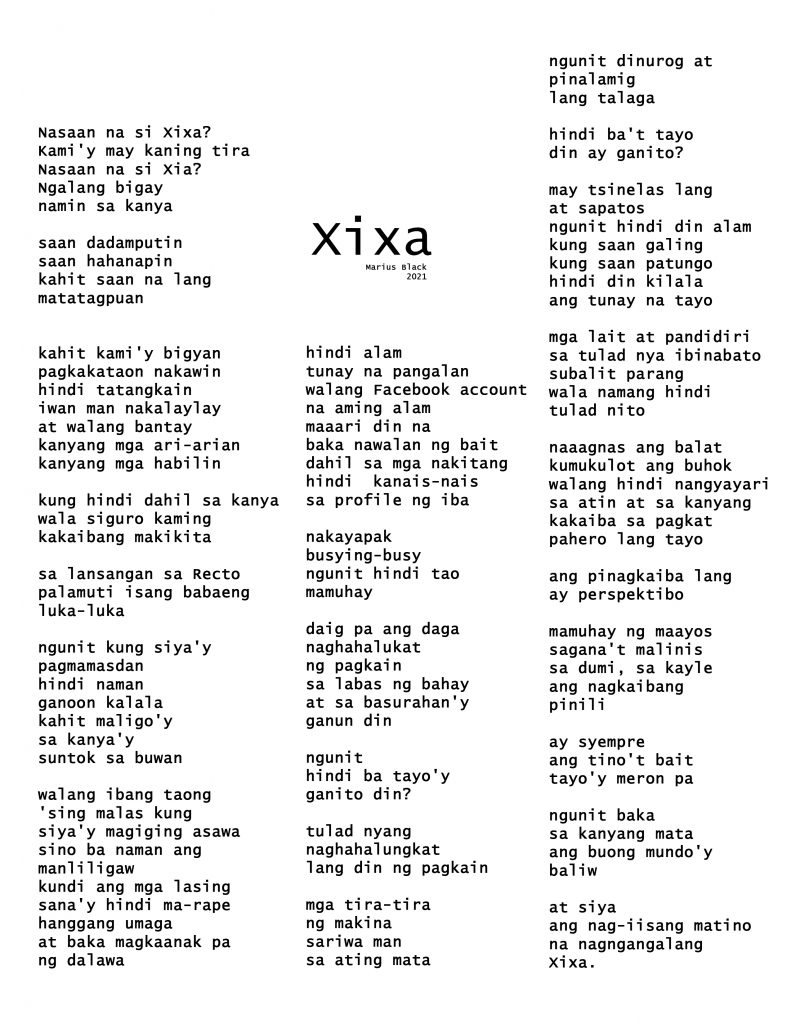
Vagabond
At first glance, ‘Vagabond’ may look like it’s just showing a person begging for coins along the streets of Divisoria. However, Marius sees the opposite.
For him, the man in the piece was a ronin, a retired samurai who used to live in luxury, got demoted, and is now just begging in the streets. Whether this narrative that Marius creates is real or not, ‘Vagabond’ is the closest image of what it’s like being homeless on the streets of Manila.
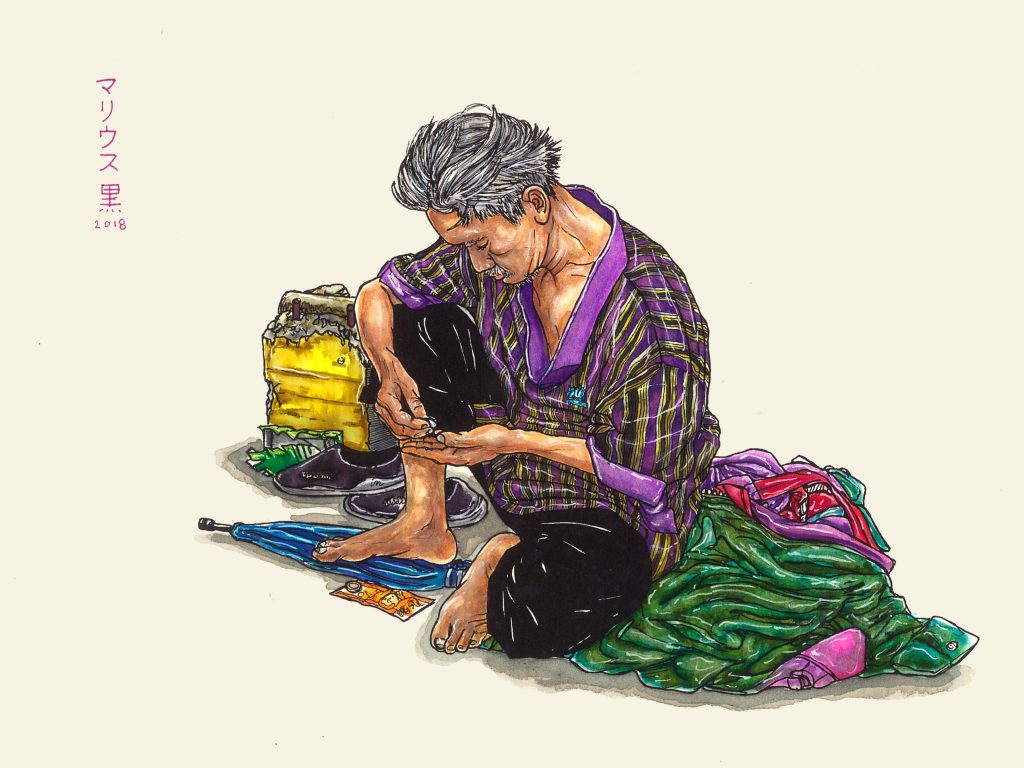

In conclusion, Marius’ works bring people closer to the country’s overlooked reality. His artworks convey the unfamiliar experiences that transpire within the corners of Manila, as his subjects are usually hidden from the limelight.
What happens is that people would rather see only the pleasant and then leave the crumbs of reality out of the picture. But if that’s the case, then that’s not the honest-to-goodness description of Manila.
However, the simplicity and mundanity of the paintings still allow people to have their own interpretation of his artworks, which he openly encourages.
“I don’t aim for one emotion that people would get from a specific artwork I have. If they become happy or sad about it, it’s their experience. If they grow angry or be amazed, it’s their take because people are all different. I think that’s what we all have in common, that we’re all different,” Marius said. F – Christine Janine T. Cortez

